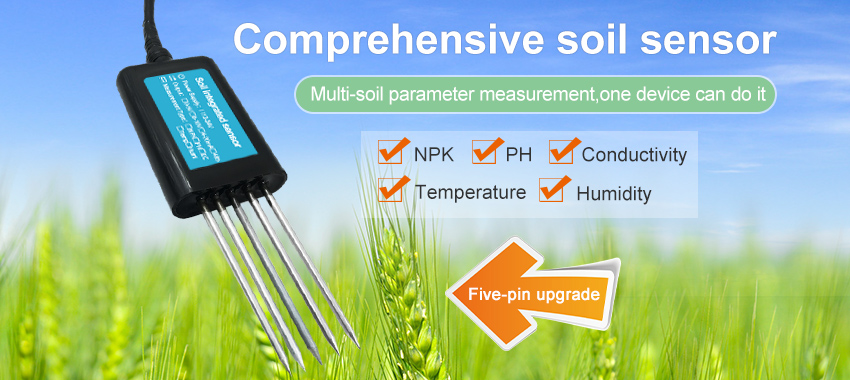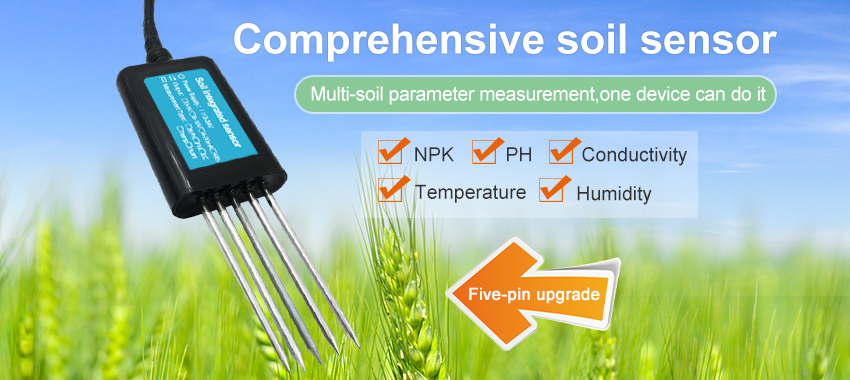Precision farming, also known as precision agriculture, has transformed the way we approach farming practices. This innovative approach utilizes technology to optimize crop production, reduce resource wastage, and enhance sustainability. One key component of precision farming is the utilization of soil sensors to improve nutrient and moisture management. These sensors provide valuable data about soil health in real-time, enabling farmers to make informed decisions regarding fertilization, irrigation, and overall crop management. In this article, we will explore the significance of soil sensors, how they work, and the benefits they offer in promoting precision farming.

Understanding Precision Farming:
Precision farming involves the use of advanced technologies such as satellite imagery, GPS systems, and sensors to gather data about specific areas of farmland. This data is then used to tailor agricultural practices according to the unique needs of each area, rather than relying on a one-size-fits-all approach. By utilizing precision farming techniques, farmers can optimize the use of resources, reduce costs, and minimize environmental impact.
The Importance of Soil Health:
Soil health plays a crucial role in crop growth and productivity. Healthy soil provides the necessary nutrients and moisture for plants to thrive. However, assessing soil health accurately can be challenging without the aid of technology. Soil sensors offer a solution by providing real-time data on soil conditions, including nutrient levels and moisture content. This information is invaluable for farmers seeking to optimize nutrient and moisture management.
The Role of Soil Sensors:
Soil sensors are devices designed to measure various properties of the soil, including nutrient levels and moisture content. They utilize advanced technology to collect data, which is then transmitted to farmers in real-time. This allows farmers to monitor soil conditions and make data-driven decisions regarding crop nutrition and irrigation.
a. Nutrient Sensors:
Nutrient sensors are designed to measure the concentration of specific nutrients in the soil. Different types of nutrient sensors are available, including ion-selective electrodes, optical sensors, and electrochemical sensors. Ion-selective electrodes work based on the principle of ion exchange and provide accurate measurements of specific nutrients such as nitrogen (N), phosphorus (P), and potassium (K). Optical sensors utilize light absorption or fluorescence properties to estimate nutrient levels, while electrochemical sensors generate measurable signals corresponding to nutrient concentrations.
b. Moisture Sensors:
Moisture sensors are used to measure the moisture content in the soil. Capacitance-based sensors, tensiometers, and time domain reflectometry (TDR) sensors are commonly used for this purpose. Capacitance-based sensors analyze the electrical capacitance between two electrodes inserted into the soil, providing precise measurements across various soil types. Tensiometers measure soil moisture by observing changes in water tension, while TDR sensors analyze the propagation time of electromagnetic pulses to determine soil moisture content.
Advantages of Soil Sensors:
The utilization of soil sensors in precision farming offers several benefits:
a. Real-time Data:
Soil sensors provide farmers with real-time data on nutrient levels and moisture content. This allows farmers to make timely decisions regarding fertilization and irrigation, ensuring that crops receive the necessary nutrients and water at the right time.
b. Precision Management:
By utilizing soil sensors, farmers can accurately monitor soil conditions and tailor their agricultural practices accordingly. This precision management leads to optimal nutrient and moisture levels in the soil, which in turn promotes healthy crop growth and higher yields.
c. Resource Efficiency:
Soil sensors enable farmers to optimize resource usage by providing insights into nutrient availability and moisture levels. This helps reduce excessive fertilizer use and water wastage, leading to more sustainable farming practices and reduced environmental impact.

d. Early Detection of Issues:
Real-time data from soil sensors allows farmers to detect nutrient deficiencies or excesses and moisture deficits or excesses early on. By identifying these issues promptly, farmers can take corrective actions to prevent crop damage and optimize plant health.
e. Data-driven Decision Making:
The data provided by soil sensors empowers farmers to make informed decisions based on accurate information. This reduces reliance on guesswork and intuition, leading to more efficient farming practices and improved outcomes.







